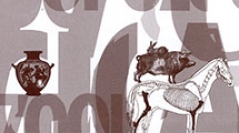

 Anthropozoologica
44 (1) - Pages 159-172
Anthropozoologica
44 (1) - Pages 159-172A unique feature at the mid-6th millennium BCE settlement at Domuztepe, Turkey, is a large pit filled predominantly with fragmented human and animal bones. Previous studies have established that the “Death Pit” animal bone assemblage is characterized by specific features not found in the daily refuse from the rest of the site. The present study seeks further understanding of the Death Pit through a preliminary comparison of the animal and human bone assemblages, including element preservation, degree of fragmentation and breakage patterns. Spatial models of animal and human bones in the Death Pit provide insight into depositional sequencing and the nature of the probable feasting activities that produced this assemblage. Our initial osteological results show that the near identical processing of humans and animals is indicative of cannibalism. However, a lower occurrence of fragmentation on human skulls, together with depositional differences between animals and humans, also suggests that conceptual differences between human and animal were maintained.
Late Neolithic-Turkey, Halaf, communal burial, butchery, cannibalism.